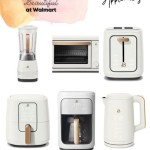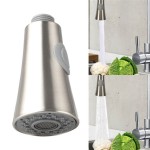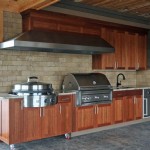Organize My Kitchen: Easy Solutions For A More Efficient House
The kitchen is frequently considered the heart of any house, serving as a hub for meal preparation, social gatherings, and family interactions. However, a poorly organized kitchen can quickly become a source of stress and inefficiency. A cluttered countertop, overflowing cabinets, and a disorganized pantry can hinder cooking efforts, increase food waste, and generally detract from the enjoyment of the home. Organizing a kitchen offers benefits far beyond aesthetics; it promotes efficiency, reduces waste, and contributes to a more peaceful and functional living space.
Effective kitchen organization involves a multi-faceted approach, considering layout, storage solutions, and routine maintenance. It requires a deliberate assessment of current practices, identification of problem areas, and implementation of targeted strategies to optimize space and streamline workflows. This article aims to provide easy-to-implement solutions for organizing a kitchen, ultimately transforming it into a more efficient and enjoyable area within the house.
De-Cluttering and Assessing Inventory
The initial step in organizing any kitchen is a thorough de-cluttering process. This involves removing items that are no longer needed, used, or in good working condition. Begin by emptying all drawers, cabinets, and pantry shelves. This allows for a comprehensive assessment of the current inventory and provides an opportunity to clean the empty spaces.
As items are removed, categorize them into three groups: items to keep, items to donate, and items to discard. Items to keep should be those that are frequently used, in good condition, and essential for cooking or food storage. Items to donate should be those that are still functional but no longer needed. Items to discard should be broken, damaged, or expired items that cannot be salvaged.
Be honest and critical when evaluating each item. Consider how frequently it is used and whether it serves a practical purpose. Resist the urge to hold onto items "just in case," especially if they take up valuable space and contribute to clutter. Common culprits for kitchen clutter include duplicate utensils, appliances that are rarely used, and expired food items. By removing these unnecessary items, significant space can be freed up, making it easier to organize and access the remaining essentials.
Once the de-cluttering process is complete, take stock of the remaining items. Categorize them based on usage frequency, type of food, or function. This will inform the subsequent stages of organization, such as determining optimal storage locations and implementing organizational systems.
Optimizing Storage Solutions
Efficient storage is paramount to maintaining an organized kitchen. Optimizing storage solutions involves utilizing existing spaces effectively and incorporating innovative storage solutions to maximize capacity and accessibility. Consider the layout of the kitchen and identify areas that can be better utilized.
Vertical space is often underutilized in kitchens. Install shelves in cabinets to create more storage tiers. Use drawer organizers to separate utensils and cookware, preventing clutter and making it easier to find specific items. Consider using stackable containers in the pantry to maximize vertical space and keep food items organized.
Corner cabinets can be notoriously difficult to access. Install lazy Susans or pull-out shelves to maximize the use of this space and make items more easily accessible. Hang pots and pans on a rack or utilize a pot rack organizer to free up cabinet space and keep cookware within easy reach.
The space under the sink is often a neglected area. Utilize this space by installing organizers designed specifically for storing cleaning supplies. This will prevent clutter and keep these items separate from food and cooking utensils.
Consider incorporating innovative storage solutions such as pull-out spice racks, magnetic knife strips, and over-the-door organizers. These solutions can maximize space and keep frequently used items within easy reach. Label all containers and shelves clearly to ensure that items are returned to their designated locations after use.
When organizing the pantry, group similar items together, such as baking supplies, canned goods, and snacks. Place frequently used items at eye level and less frequently used items on higher or lower shelves. Utilize clear containers to store dry goods such as flour, sugar, and pasta. This will make it easier to monitor inventory and prevent food waste.
Establishing Organizational Habits and Systems
Simply organizing a kitchen once is not enough. Maintaining an organized kitchen requires establishing consistent organizational habits and systems. Implement regular routines for cleaning, organizing, and restocking to prevent clutter from accumulating and ensure that the kitchen remains functional and efficient.
Establish a daily cleaning routine that includes wiping down countertops, washing dishes, and sweeping the floor. This will prevent food spills and crumbs from accumulating and keep the kitchen looking clean and tidy. Implement a weekly cleaning routine that includes cleaning the refrigerator, wiping down appliances, and mopping the floor.
Develop a system for putting away groceries immediately after shopping. Designate specific storage locations for different types of food and ensure that all family members are aware of this system. This will prevent clutter from accumulating on countertops and in the pantry.
Implement a "one in, one out" rule. For every new item that is brought into the kitchen, an old or unused item should be discarded or donated. This will prevent the accumulation of unnecessary items and keep the kitchen from becoming cluttered. Regularly check the pantry for expired food items and discard them promptly. This will prevent food waste and ensure that the pantry remains organized and efficient.
Encourage all members of the household to participate in maintaining the kitchen's organization. Assign specific tasks to each family member and ensure that they are responsible for completing them regularly. This will foster a sense of shared responsibility and ensure that the kitchen remains organized and functional.
Consider implementing a system for meal planning. Plan meals for the week in advance and create a grocery list based on the planned meals. This will prevent impulse purchases and ensure that only necessary items are brought into the kitchen. Prepare ingredients in advance, such as chopping vegetables or marinating meat. This will save time during meal preparation and reduce clutter in the kitchen.
By establishing consistent organizational habits and systems, the kitchen can be transformed into a more efficient and enjoyable space. Regular cleaning, restocking, and de-cluttering will prevent clutter from accumulating and ensure that the kitchen remains functional and well-organized.
Adapting these strategies to individual needs and preferences is crucial for long-term success. Experiment with different storage solutions and organizational systems until a system that works best for the individual household is found. With dedication and consistent effort, any kitchen can be transformed into a well-organized and efficient heart of the home.

How I Organize My Kitchen To Make It More Functional Easy Maintain

40 Genius Pantry Organization Ideas

20 Kitchen Storage Ideas Extra Space

20 Kitchen Storage Ideas Extra Space

35 Small Kitchen Organizers That Make The Most Of Tight Quarters Reviews By Wirecutter

18 Tiny House Storage Ideas Organization S Extra Space
:strip_icc()/NEATLITTLENEST1-f37d50a35cbe4561a7e9be0a0221506f.jpg?strip=all)
20 Best Small Pantry Organization Ideas You Have To Try

How To Organize A Pantry

10 Small Kitchen Storage Ideas To Maximize Your Space

How I Organize My Kitchen To Make It More Functional Easy Maintain
Related Posts








